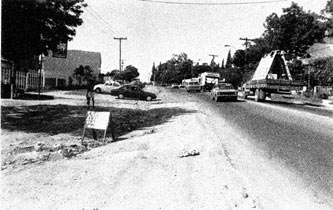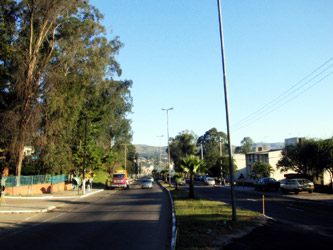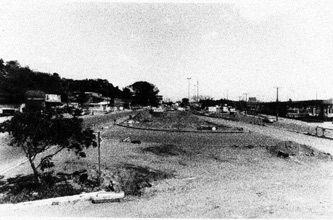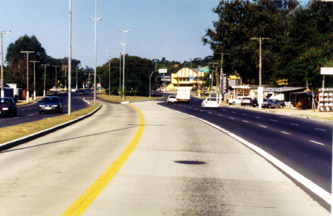Participatory Budgeting
What problem does it solve?
Before the days of participatory budgeting, only a few cities knew the answers to questions such as: what happens to public funds at the municipal level? Where does the money come from? How are budget priorities determined? Broadly speaking, a significant gap exists between the elected, local politics and the people. This diminishes social cohesion, reduces the sense of citizenship, undermines the relevance of public investment and makes for unequal allocation of resources.
Participatory budgeting helped establish new relations between the elected, local politics and the population. It was necessary to find ways to end passivity and favouritism, and stimulate participation. Objective criteria were needed to determine investment and expenditure in a way that was acceptable to the community and capable of involving the entire city, and through which an order of priorities could be established that took into account the enormous differences that existed in the city. 

Various elements contributed to the success of participatory budgeting:
• Municipal authorities (Mayor, Mayor’s Office and Chamber of Deputies), technical offices and agencies
• The population, by taking a direct part in various meetings to determine municipal budget priorities
• The community (district organisations, cooperatives, associations, etc.)
As a result of debate on priority issues and needs of each district, decision-making powers granted to the direct representatives of the people, and transparent criteria used in budget implementation, the attitudes of both municipal authorities and the population began to change. The municipality has a greater responsibility towards the people in terms of expenditure, investment and results. The people are more aware of the needs of the inhabitants and the difficulties involved in satisfying them; they have a greater responsibility in the choices that are made and are more motivated to pay taxes. This change has strengthened relations between the municipality and the population, making them more democratic and transparent. It has reinforced the sense of belonging that different groups of the population have towards the city, and produced greater social inclusion.
Apart from changing the geography of the ‘Gaucho Capital’ with hundreds of public works, participatory budgeting has established a new relationship between the government and the population. The residents have taken part in decision-making processes, supervising and following up municipal investment for 16 years. Since 1989, numerous modifications have been made to strengthen the efficiency and democratic nature of the process. In fact, participation has grown considerably: fewer than 1,000 inhabitants took part in the first participatory budget in 1990, while today the yearly average stands at over 40,000 people, with a renewal index of around 50%.
ABC OF PARTICIPATORY BUDGETING
• Municipal Assembly – a major event for people to meet. New participatory budget councillors take office; the government is given a prioritised list of demands for public works and services throughout the city. It also provides an opportunity for discussions on general issues, for example the 4th City Conference.
• Participatory Councillors – representing regions of the city or thematic areas. They form the Participatory Budgeting Council. Two councillors and two substitutes from each of the 16 regions and the 6 thematic sectors are elected during the major regional and thematic plenary assemblies.
• Participatory Budgeting Council (COP) – the most important deliberative body in the participatory budget process. It is made up of 96 councillors, of which 88 are elected directly by the people in regions and thematic areas; two (a main representative and a substitute) are nominated by the Porto Alegre Union of Residents Associations (Uampa); two (a main representative and a substitute) are appointed by the Municipal Workers Union (Simpa) and four (two main representative and two substitutes) represent the Mayor’s Office, who do not have voting rights in deliberations. The COP plans, proposes, inspects and deliberates on municipal budget revenue and expenditure. It also carries out a yearly review of internal regulations, including the general and technical criteria used in participatory budgeting.
• Criteria – approved by the COP and subdivided into general criteria (used to determine procedures for allocating resources throughout the city) and technical criteria (used by the Mayor’s Office to analyse needs and verify feasibility).
• Delegates – chosen by people in meetings held between May and July in the 16 regions and six thematic areas, at a ratio of one per ten participants. Delegates are the direct representatives of the people in the participation process.
• Demands – public works and services selected by the people, which are then assessed according to technical criteria by the Mayor’s Office.
• Delegate Forums – occasions for delegates chosen by the people to meet and discuss regional and thematic issues. A general plenary assembly of delegates may be convened to debate an issue of general importance.
• Investment and services plan –a yearly statement of all the work and services that people have requested in participatory budgets, and which is put up for approval in regional and thematic forums.
• Four-year Plan – general goals and guidelines for government action over the next four years.
• Regional Meetings – meetings for residents interested in discussing and defining public works and services in a certain region of the city.
• Thematic Meetings – occasions for discussing and defining actions, policies and public works in a certain sector, as well as global directives for the city.
• Budgetary proposal –revenue and expenditure forecasts, endorsing the execution of public works and services under municipal responsibility.
• Internal Regulations – set of rules applied to participatory budgeting.
• Grand Regional and Thematic Plenary Assemblies – periodic meetings in which the government gives both written and spoken accounts of the previous year’s investments. In plenary assemblies, people prioritise demands for the following year, elect councillors, and determine the number of delegates, one for every ten participants, for each of the 16 regions and six thematic areas of participatory budgeting.

DOWNLOAD THE BROCHURE PDF
portuguese (0.8 MB)english (1.0 MB)
spanish (1.0 MB)
ONLY TEXT
•Participatory Budgeting in practice








 COUNTRY OF ORIGIN
COUNTRY OF ORIGIN